In: documentary photography
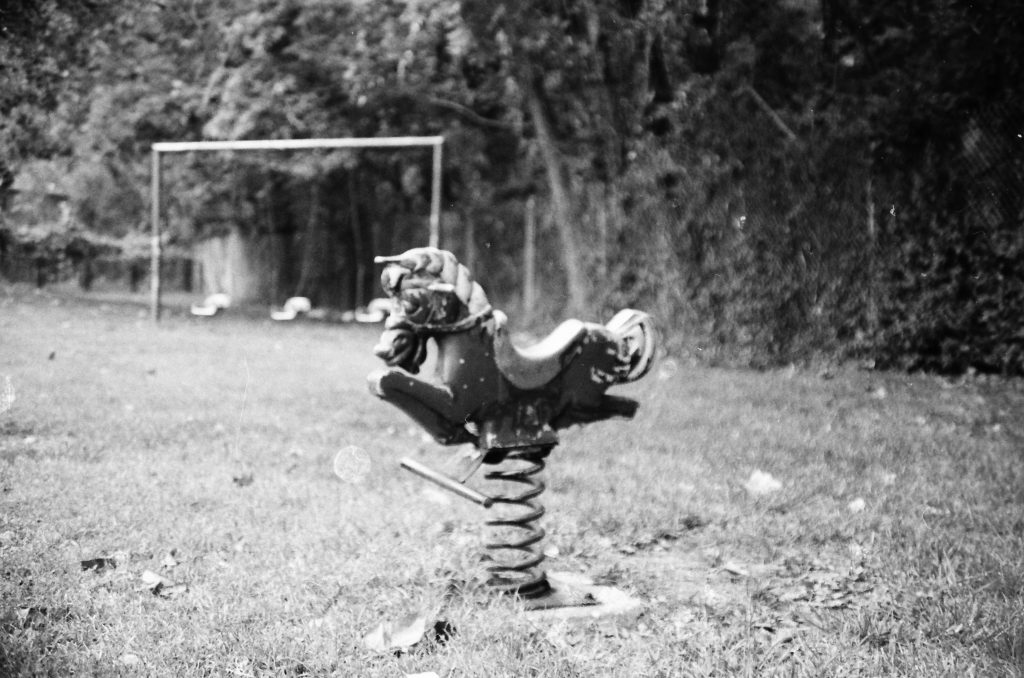
Chris Alic | Transience & Memory
September 16, 2023Chris Alic | Transience & Memory
One need not be a Chamber – to be Haunted –
One need not be a House –
The Brain has Corridors – surpassing
Material Place –
(Emily Dickinson)
The history of one who came too late
To the rooms of broken babies and their toys
Is all they talk about around here
And rebuke, did you think you’d be left out?
(Peter Straub, from Houses without Doors)
Like Mark Walton – and it’s a defining tenet of curated, I think – I also have a strong presence in my immediate and local visual arts community, with mine being Niagara : several of the artists I’ve featured here (Juliana D’Intino, for example, or Sandy Fairbairn) are ones that I’ve been lucky enough to include in a continuing curatorial project in downtown St. Catharines that began in Fall of 2022 and that is continuing indefinitely, with artists slated into late 2024.
Chris Alic is one of those artists, as her exhibition with Amber Lee Williams is currently on view at Mahtay Café & Lounge. That grew out of a 5 x 2 Visual Conversations evening (a relaxed sharing of art and ideas that I’ve facilitated for over five years, in St. Catharines and Welland). Like any good curator, I offered support to the two artists but primarily stayed out of the way, with some appropriate gentle nagging.
From that immediacy, let’s indulge some of my subjectivity that sparked my interest to consider these two pieces by Alic.
As the artist said when she spoke about the work, these are images from time she spent in Missouri in the United States – and, of late, I’ve fallen down another rabbit hole that centres upon the idea of the aesthetic of the Southern Gothic, whether that be in terms of crime or horror, but usually (and I own this) on the darker side. In light of this, the abandoned and lonely toys of Alic’s images take on a more ominous tone. Further clarification : I’ve been eschewing the ‘standard’ Southern Gothic horror of New Orleans, in my reading and research, but instead have been looking at other sites in the American South – like Charleston, or Alic’s Missouri – as these oft ignored sites have an unexplored richness in their stories that is more diverse than you might think. I also mention this – not just as another subjective indulgence – but because many of the stories I’m encountering in this enjoyable research are defined – or deformed – by the history of those sites (the institutional racism flows into the occult or supernatural horrors of the stories. There’s a story by Alan Moore about a television show that is shot on an old abandoned plantation where the filming somehow invokes the ghosts of the enslaved, and the actors ‘become’ their characters, with new manifestations of hate and racism being merged with old…all horror, they say, comes out of reality….or perhaps even the superficially banal, like Alic’s empty playground and abandoned tricycle….)
The words of the artist :
Memory is a huge part of what makes us human. Every interaction, every step, sight, sound, touch, smell – all these things create memory. But they are fragile. They are guided by perception, they are malleable, layered, are influenced by who we become, and who we become is in part made up of what we remember. Our memories continue to create us, and we create our memories. And we lose them. They fade, disintegrate, become suspect. They are subject to context, transformation and decay, and temporality, just like the spaces we inhabit and the things we use. They become the liminal space between an event and a feeling. Does emotion exist without memory?
I have been using a camera to secure my memories since I was a single-digit kid. I don’t remember ever not having a camera, or access to a camera. It was a part of my childhood, and everyone around me took photos and 8mm film of everyday life. My immediate and extended family were avid documentarians. I am continuing that tradition, but somewhere along the way I made the decision to “crop” those memories – to capture only small portions of context, little bits of an event, inexplicable to anyone but myself because each image is connected to an important moment, an emotion, a piece of who I became because of it. And then I edit. Adjust. Refine. Sometimes intentionally erase, fade, and transform them.
These seven images were made during a two-year period living in Columbia, Missouri. All were taken on a Yashica FX-70 Super 2000 film camera. I learned to use a darkroom and print my own photos with this film, and two of the images were only recently developed using caffenol-c. I had forgotten that I had taken the photos, I had forgotten the existence of the places until I saw them again.
The two person exhibition CHRIS ALIC & AMBER LEE WILLIAMS | TRANSIENCE OF MEMORY is on display at Mahtay Café & Lounge in downtown St. Catharines for the month of September, 2023.
~ Bart Gazzola
Read More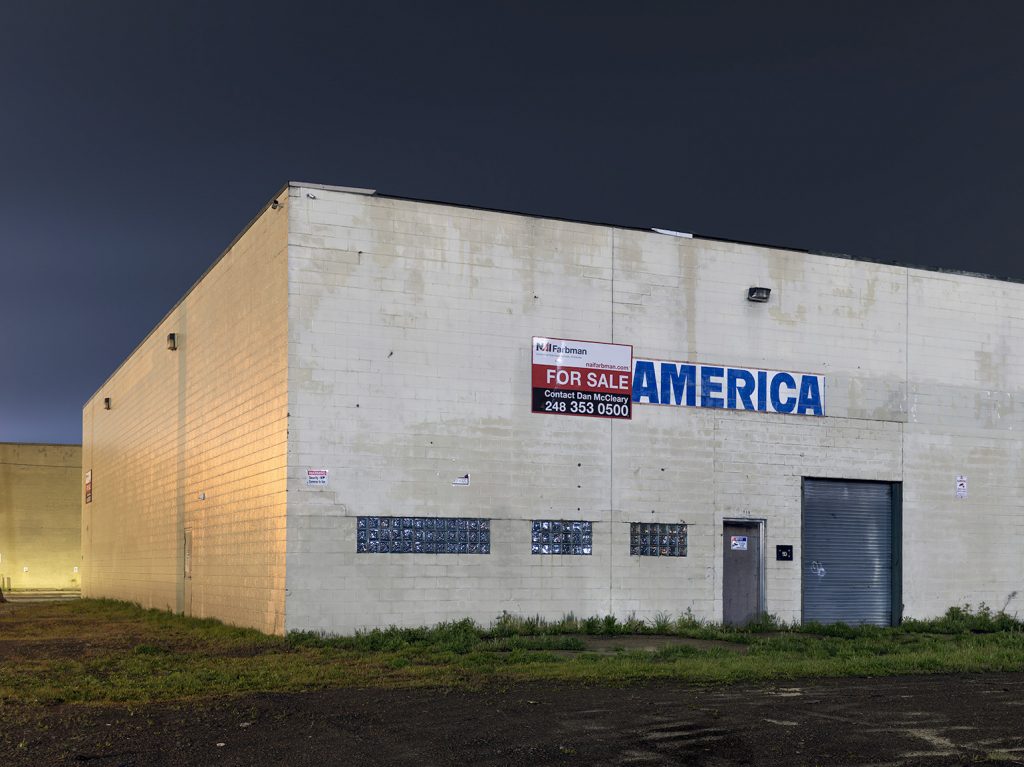
Dave Jordano | For Sale – America, Westside, Detroit, 2020, from his A Detroit Nocturne Series
March 2, 2023Dave Jordano | For Sale – America, Westside, Detroit, 2020, from his A Detroit Nocturne Series
In the West, the past is very close. In many places, it still believes it’s the present. (John Masters)
Speramus meliora; resurget cineribus | We hope for better things; it will arise from the ashes. (City of Detroit’s motto)
The city makes you; in a million little ways it makes you, and you can’t unmake yourself from it. (Craig Davidson, Cataract City)
Detroit is nothing if not a physical site of contested narratives: having lived in Windsor – Detroit for a half dozen years, the mythology and the reality of that city was something I was exposed to as I was just beginning to mature as an artist and writer, and that city (whether through the Detroit Institute of Arts or the stereotypes of the rust belt wonderlands, the legacy of the riots and so much malfeasance on the part of supposed stakeholders that layer ruin upon ruin) played a large part in my development. Eight Mile Road is not just a song by Eminem, but a real place, with real people, to me.
It’s unsurprising to find out that Jordano is from Detroit: his portraits of the city suggest an affection and an affinity that is more personal, and that he connects with his subjects – whether people or places – in a manner that is more gentle, despite the harshness of the locus he captures, often being abandoned, or the stark industrial lights that help define his scenes. Or perhaps it’s more like one of my favourite books about place and memory, where Craig Davidson talks about how “the most awful thing about living as an adult on the same streets where you grew up? It’s so easy to remember how perfect it was supposed to be. Reminders were always smacking you in the face. Good things happened—sure, I knew that. They just happened in other places.”
Jordano’s own words about this series are as follows: “I chose to make these images at night not only to put more emphasis on their surroundings, but also because I wanted to introduce a moment of quiet and calm reflection. These nighttime landscapes seem unfamiliar and therefore provoke contemplation. Pieces of the past, present, and future are rendered here to be carefully considered. They are, after all, the physical evidence of the city where we once carved our collective ambitions and lived out our dreams.”
I must inject more words – to augment or challenge Jordano’s own – from Craig Davidson’s Cataract City here: “Most of us in Cataract City were hard because the place built you that way. It asked you to follow a particular line and if you didn’t, well, you went and lived someplace else. But if you stayed, you lived hard, and when you died you went into the ground that way: hard.”
Much more of Jordano’s work can be enjoyed at his site as well as on Instagram.
His extensive body of work – under the title of A Detroit Nocturne – can be viewed here.
~ Bart Gazzola
Read More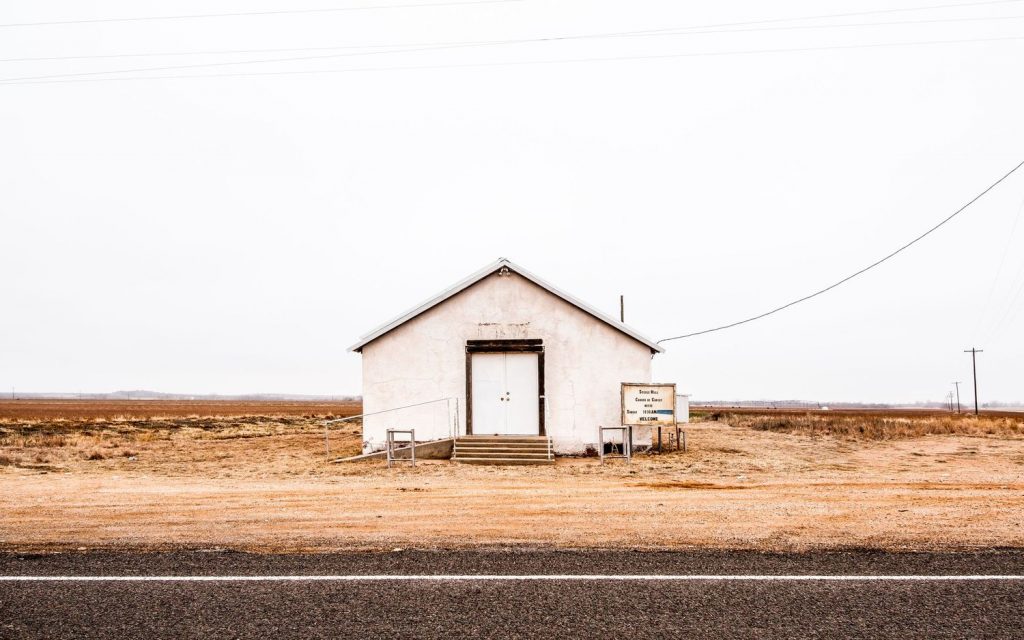
The Great Texas Road Story | Stephen Hood
February 25, 2023The Great Texas Road Story | Stephen Hood
IG: @thegreattexasroadstory
https://www.thegreattexasroadstory.com/
I refuse to remember the dead.
And the dead are bored with the whole thing.
But you — you go ahead,
go on, go on back down
into the graveyard,
lie down where you think their faces are;
talk back to your old bad dreams.
(Anne Sexton, A Curse Against Elegies)
Well, I see your light’s still on, so I guess you must be out there. It’s okay if you don’t want to talk, you know. I don’t want to talk either, sometimes. I just like to stay silent. (Nastassja Kinski | Jane Henderson, from the film Paris, Texas)
The scenes that make up The Great Texas Road Story are cinematic. This is not just the nature of the vignettes captured, but that encountering this work on IG, it is like a continuing tale, with missives ‘sent’ to us, like an ongoing conversation or ‘postcards’ in a continuing narrative….
They have a quality of scouting locations for a film, but I will admit that I’m bringing in my subjective response, again.
Looking at some of these, I’m – obviously, due to the title of the endeavour – reminded of the fine cinematography of the film Paris, Texas, by Robby Müller. But I’m also reminded of the television series Carnivàle, where a travelling carnival trudges across the United States amidst the arid dustiness and despair of the Dust Bowl Depression. Like the moments photographer Stephen Hood presents in The Great Texas Road Story, the episodes in that series are named after the small towns they traverse – and it all starts in Marfa, Texas, in an odd synchronicity to Hood’s travels around Texas for this project. Looking at the site for The Great Texas Road Story, empty places like Spur and Snyder might be Marfa – or vice versa.
And in the end, these places – despite their evocative physical presence captured by Hood – are also characters in a story, repositories for memories and ideas both personal and more public.
“The Great Texas Road Story is an ongoing photography project devoted to the authentic small Texas town. I aim to continue to artistically capture the places in Texas I find compelling and to share that work here.
This photography project began organically in June 2020, when suddenly, I had to get out of town with my girlfriend, as we hadn’t left our tiny Austin apartment in months, and we needed to do something. Had to go. So we booked a campsite at the state park and headed out west to camp in the Davis Mountains near Marfa. A good ole Texas road trip (soothes the soul) was soon underway.
Our first stop was San Angelo, where we saw a porcupine. I brought an old camera and started photographing the landscape of Texas. I hadn’t picked up a camera in months, but from then on, we were on the road every other weekend documenting all of the small towns along the way.
I only moonlight as a Texas documentarian…It is in my spare time that I lovingly chronicle a disappearing Texas.” (Stephen Hood)
That’s an excerpt of Hood’s description of this work, and more of his images can be seen here: but you’ll be able to enjoy more of these moments if you give The Great Texas Road Story a follow on Instagram here.
~ Bart Gazzola
Read More
Krydor, SK | Danny Singer, 2014
February 17, 2023Krydor, SK | Danny Singer, 2014
I would walk to the end of the street and over the prairie with the clickety grasshoppers bunging in arcs ahead of me, and I could hear the hum and twang of wind in the great prairie harp of telephone wires. Standing there with the total thrust of prairie sun on my vulnerable head, I guess I learned — at a very young age — that I was mortal.
W. O. Mitchell, Who Has Seen The Wind
I first encountered Danny Singer’s work in an exhibition in Saskatoon curated to mark the centennial of the province at the Mendel Art Gallery. Most of the artists included had celebratory discourses at play about the place in their work, but there were a few more factual as regards the history – and present – of that province. The Mendel Art Gallery (now the Remai Modern), under the curatorial eye of Dan Ring at that time, often eschewed banal propaganda for more real dialogue, as with the 2002 exhibition Edward Poitras: Qu’Appelle: Tales of Two Valleys. That exhibition’s title “refers to two valleys: a metaphor for the way First Nations and colonists, both past and present, constructed and experienced nature, spirituality, and culture through the physical reality of the Qu’Appelle.” (from the curatorial statement for the exhibition by Dan Ring).
This also acts as another ‘place’ to stand and consider Singer’s ‘sites’, too.
Singer’s works have an element of the performative: if you’ve ever been to the small towns – or similar ones – he’s documented in Saskatchewan and Alberta, you know that they are sparse, spaced and dying, if not already dusty corpses featured in a form of photographic nostalgia that has an element of necrophilia.
Other works in this series shift the camera so that the sky dominates the majority of the composition, so solid and blue it looks hammered into place, with clouds moving like the ocean, and the towns almost miniscule below all of this. Mitchell’s sentiment about the transience of humanity in the face of the eternity of nature is at play in those works, too.
“In Singer’s large-scale composite photographs, there is a real tension between the assumptions of photography as a medium – the fixed point of the camera, capturing a single moment in time – and the reality of the artist’s process, which takes hours and involves hundreds of vantage points. To the viewer, the photographs have a collapsing effect: the passage of time witnessed in a single glance.
The Vancouver-based artist has spent fifteen years photographing the main streets of small towns and hamlets across the prairies and plains of North America, drawing attention to the rural, agricultural communities on which Canada’s economy was built. In these large-scale works, strings of vernacular buildings are dwarfed by a dynamic sky, which fills the visual field. Out of the frame, one can imagine the horizontal repetition of this diminishing effect—farmland stretching hundreds of miles in either direction.” (from Galleries West)
More of Singer’s work can be seen here.
~ Bart Gazzola
Read More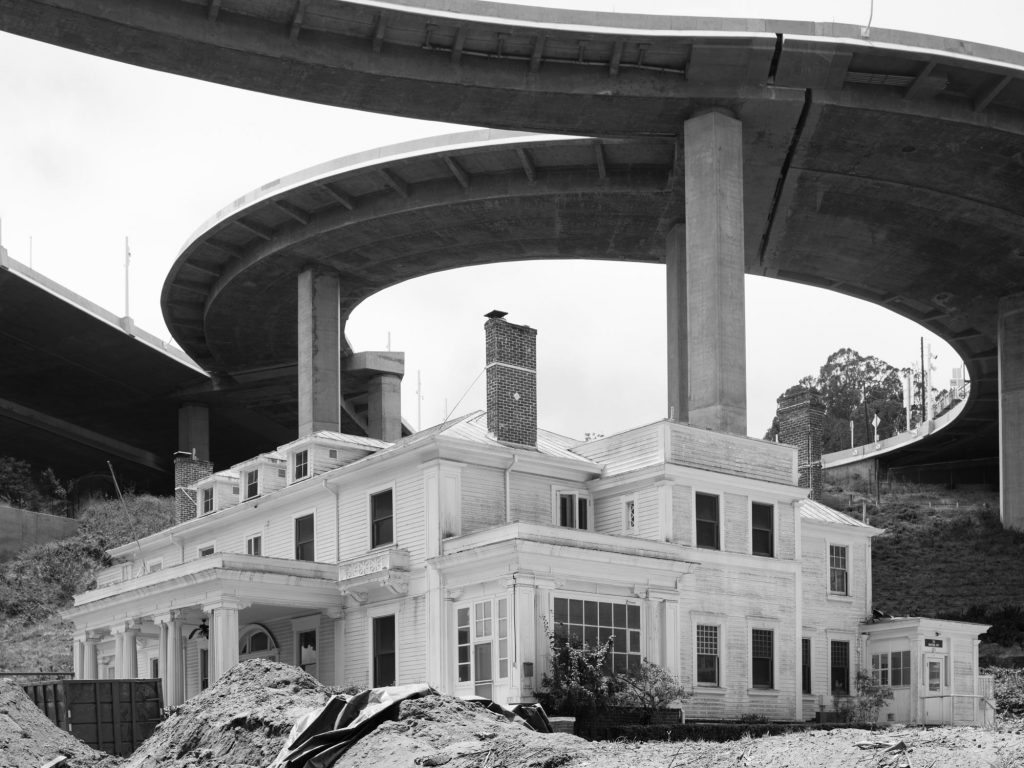
Mimi Plumb | The Golden City, 1984 – 2020
February 2, 2023Mimi Plumb | The Golden City, 1984 – 2020
So this is where the Renaissance has led to | And we will be the only ones to know
So take a drive and breathe the air of ashes | That is, if you need a place to go
If you have to beg or steal or borrow | Welcome to Los Angeles, City of Tomorrow
(Phil Ochs, The World Began In Eden And Ended In Los Angeles)
When I first encountered Plumb’s images, that song from the late Phil Ochs came to mind: it seems upbeat and pleasant but is, in fact, nuanced with a despair that is subtle but builds (and I will admit my interpretation may be coloured by his suicide. But the rendition of that song I am familiar with is a live version, and Ochs talks at the beginning of his fascination with Los Angeles “which intrigues me like a sensual morgue.” Plumb’s works have a certain sterility, to them, as well, that intersects with this consideration).
As with Plumb’s scenes, there’s more at play than the obvious. Considering that California exists in imaginations just as vividly – if not always accurately – as any seminal ‘place’ like ‘Siberia’, Plumb’s photographs invite us to construct narratives around them, that build, converge or perhaps complete what she intends, with her own personal stories….
I will admit that when looking at Mimi Plumb’s photography, that The Golden City often blended with another body of work of hers, titled The White Sky. I doubt that the artist would be offended by that, as the elements of memory, nostalgia and social realism suffuse her practice, and are themes that are present in her artwork still. Although her narrative is a personal one, it also has elements that are more universal, when considering larger tropes that her work touches upon.
“The Golden City [is] a series of images that frames subjects against the sprawling backdrop of San Francisco. Similar to Plumb’s other bodies of work, The Golden City is an ode to an earlier America—a rich and playful elaboration on the human condition, and its tendencies towards hedonism and spectacle. To say that this work largely references the exploitation of the natural world on account of humans would be reductive. While sculptural detritus and empty construction sites set the groundwork for this series, Plumb flips dramatic irony on its head by capturing subjects enthralled by events transpiring just beyond the frame. We are not in on the comings and goings within this world, but are sucked in nonetheless; left only with a sense of wonder at what could be bringing about such awe.” (from Document, with an engaging conversation with Plumb you can read as well)
Much more of Plumb’s work – from this series and a number of others – can be seen here. If you’d like to listen to her talk about her work, the Museum of Contemporary Photography has a video you can enjoy here.
Plumb published a book of selected images from this body of work with Stanley/Barker books in 2022.
~ Bart Gazzola
Read More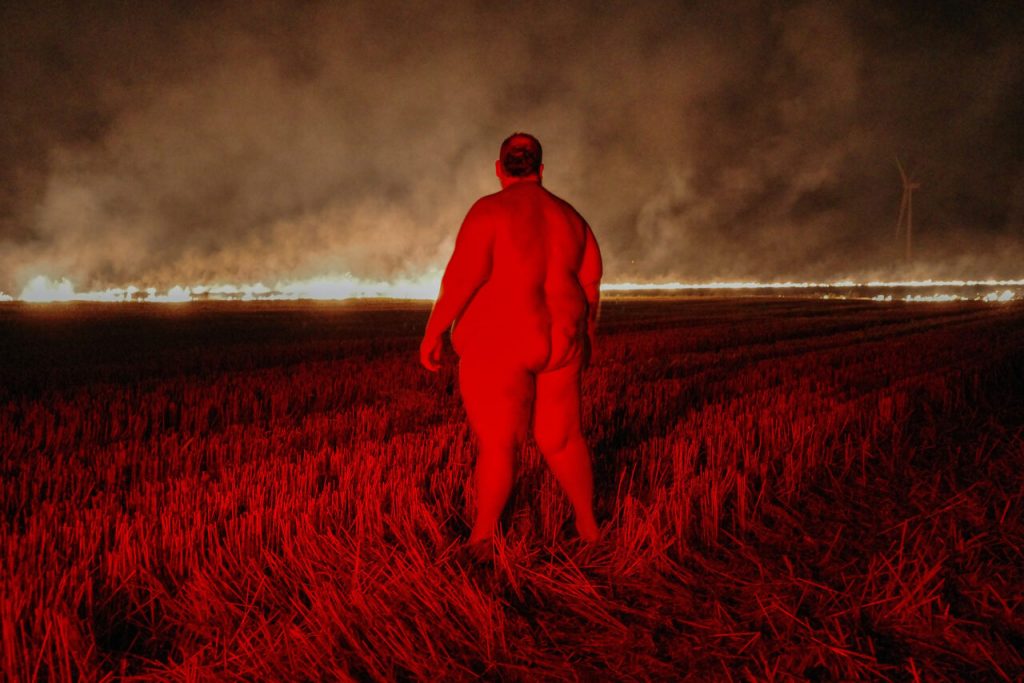
Artem Humilevskyi | Untitled from the series Giant, 2020 – 2021
January 13, 2023Artem Humilevskyi | Untitled from the series Giant, 2020 – 2021
F. once said: At sixteen I stopped fucking faces. I had occasioned the remark by expressing disgust at his latest conquest, a young hunchback he had met while touring an orphanage. F. spoke to me that day as if I were truly one of the underprivileged; or perhaps he was not speaking to me at all when he muttered: Who am I to refuse the universe? (Leonard Cohen, Beautiful Losers)
Many years ago – as in decades – I fulfilled a dream I had of being a Ramboy in the artist Evergon’s photographic series Ramboys: A Bookless Novel. These were primarily nude portraits, and though it was a wonderful experience it is somewhat intimidating to be so exposed both in the moment and with the photograph afterwards (even when young and relatively fit).
I used to joke that I hoped that no other images of myself might proliferate, so that when I was arrested for some crime, newspapers and media would need to use that image, to much amusement and potential scandal (for others, not me. I would later work with Evergon again, ‘playing’ Puck in his photographic iteration of A Midsummer Night’s Dream).
But there is always a vulnerability in self portraiture, whether you’re bare or baring an aspect of yourself. This is present not just in the creation of the work, but also in considering how those images might be received.
That courage in the face of vulnerability – real or imagined, potential or expected – is what initially engaged me about Artem Humilevskyi’s series GIANT.
“Before he released GIANT, a series of self-portraits, Artem Humilevskyi’s finger hovered over the “publish” button for six hours. It was a personal project that required him to bare all, both physically and philosophically, and he had no way of knowing how people might react. In the end, it was worth the risk. “Hitting that button was a decisive step in the project,” he says. “When I did it, I realized that nothing happened. No one threw stones at me; all the experiences I had dreaded lived only in my head.””
“GIANT is a two-year project that began in March 2020. The collection is about understanding and accepting yourself as a human being. It is not necessarily body positive or a call to change the norms or the aesthetics of the body. It is a way of denying the sexualization of the human body, it’s about accepting yourself as an individual and being able to make friends with yourself; a way to stop hating yourself for your imaginary flaws. It has not been easy because real freedom from external and internal condemnations is not possible without a fight. Each photograph is a new step on this path to this freedom. The body as a subject in the project is not important, it can be an interpretation of any of the qualities that you dislike or hate. Reconciliation with them is the only way to become a complete person who understands that all our troubles are only inside our minds. Love yourself for what you used to hate and you will feel true freedom.” (from here)
More of this series can be seen here.
IG: @humilevskiy
~ Bart Gazzola
Read More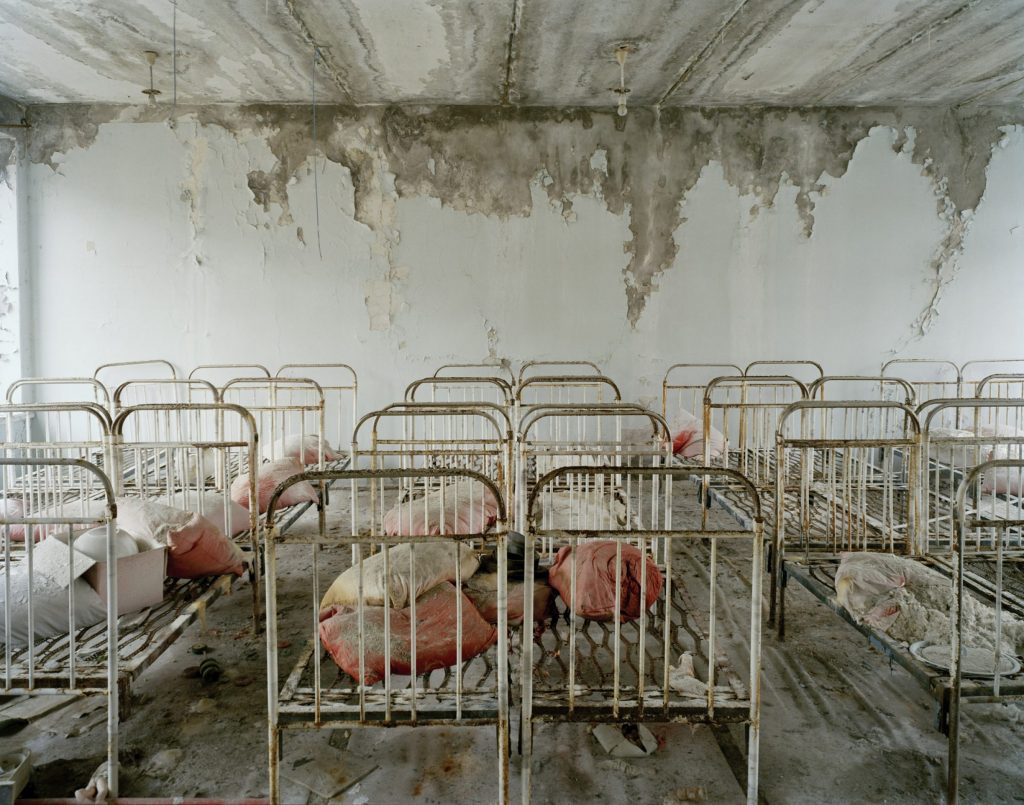
Nadav Kander | Chernobyl, Half Life, 2004
December 23, 2022Nadav Kander | Chernobyl, Half Life, 2004
I drink to our ruined house,
to the dolor of my life,
to our loneliness together;
and to you I raise my glass,
to lying lips that have betrayed us,
to dead-cold, pitiless eyes,
and to the hard realities:
that the world is brutal and coarse,
that God in fact has not saved us.
(Anna Akhmatova, I drink to our ruined house…, 1934)
I am old enough to remember when Chernobyl happened, and like many events it has become larger in the public consciousness as the years pass. In some ways, my time as a teenager had numerous events that have shaped history, as I also remember being in my high school history class and discussing the fall of the Berlin Wall, which happened a few years later.
One can’t speak of the fall of the Soviet empire without citing Chernobyl: Emmanuel LePage, in the graphic novel Springtime in Chernobyl (2012), asserts that ‘the disaster in Chernobyl is the first nail in the coffin of the Soviet Bloc.’ It is not unintentional, I think, that this metaphor is employed after an earlier passage where a widow describes the elaborate entombment of her husband’s irradiated body, like a pharaoh’s sarcophagus to hell instead of heaven…
It has become a touchstone for many artists in a variety of mediums. Some use this disaster as a means to a larger conversation. Others remind us of Stephen King’s Blind Wille reminiscing about his time in Vietnam (from Hearts in Atlantis), admitting it had much to “teach him, back in the years before it became a political joke and a crutch for hack filmwriters.”
In writing about his series Chernobyl, Half Life (2004), Nadav Kander offers the following:
“Reactor No.4 at Chernobyl’s Nuclear Power Station exploded in 1986 leaving the surrounding area uninhabitable for many hundreds of years to come. It happened to be the 20th Anniversary since the explosion when I gained access as an artist to visit Chernobyl, photographing the deserted spaces in what was once a model Soviet City.
Home to more than 40,000 people, the apartments, schools and hospitals that were hastily left following the controversial evacuation are stark reminders of past lives, leaving a disturbing sense of quiet. An uneasiness that I had never previously experienced.
There is a great beauty in a very real way to be found as the poignancy of human suffering almost hangs in the air. I found myself with a familiar feeling; best described as the feeling when walking through an overgrown cemetery on a drizzly day, but what I was looking at was far from familiar.
Having grown up with stories of relations of mine including my Father with his family that were suddenly evacuated during the second world war, I could not help but feel quite profoundly shocked as well and at the same time wonder what it must have felt like to suddenly leave your home and be transported to an unknown destination, suspecting that the near future would probably bring severe ill health due to being exposed to large doses of radiation. Little is known about the radio-active affects on the people of this city as the population were dispersed all over Russia. If there was a gathering of data by the government, it was never reported.”
I’ve selected a few of the images from this series, and most of them are focused upon spaces that would be set aside for children. Kindergarten Golden Key, Sleeping Room evokes a memory of visiting Spring Hurlbutt’s The Garden of Sleep / Le Jardin du Sommeil, which was also a contrasting beautiful space to meditate upon the death and loss of children, and both provide a focus for grief.
With work like this, there is a danger of the glorification of destruction: what one of my critical brethren has called ‘ruin porn.’ Kander, however, with his choice of sites has privileged the people – their absences are very clear, in the scenes he depicts – so that amidst all of the geo political discourse, humans and our humanity is not forgotten, willfully or otherwise….
Akhmatova’s words from half a century earlier act as a fine narration of these images: as an addendum to this pick, I’d also suggest the series Chernobyl, as it also focused upon the reality of Pripyat residents, situated within a larger historical narrative (much like Ahkamatova’s poems do).
And, with Russia’s ongoing invasion of Ukraine, some historians are reminding us of past events like the Holodomor – and in some ways, Chernobyl fits within this – where an ’empire’ exhibits cruelty and disregards humanity, whether through malevolence or ignorance, and sometimes I see Chernobyl through this lens, as well….
There is a surfeit of cultural commemoration or interpretation of this event and some is better than others. Kander’s work is quietly unsettling, even after all these decades.
More of this series can be seen here.
IG: @nadavkander
~ Bart Gazzola
Read More
Elena Chernyshova | Days of Night / Nights of Day, 2012-2013
December 8, 2022Elena Chernyshova | Days of Night / Nights of Day, 2012-2013
‘I was with my people then, there, where my people, unfortunately, were.’
(Anna Akhmatova, Requiem, 1935 – 1961, writing of her times in the soviet gulag)
When I lived in Saskatoon, an acquaintance who’d spent time in Eastern Europe once commented that that city in winter was like Siberia, but without the cachet of being that place (which exists as much in our imaginations as it does in reality, one might say – as a ‘great part of the imagination of the world is attached to that site’), nor with architecture that was anything but a failed brutalism (this was during a period with the ‘economic boom’ in Saskatoon where a number of heritage buildings were lost and the banal taupe of others rose like mottled angular tumours….)
Elena Chernyshova’s work is aesthetically stunning: not just for the evocative quality of the images, but also for the scenes they present to us, that seem to blend exotica and danger, a chronicle of sites that remind us of the irrelevance of humanity in the face of nature.
But her notes and comments bring the human element back, as this is not just a ‘pretty’ image, but a site of – of course – contested narratives, that looks back to the history of the USSR and some of the ideas of industrialization and ‘progress’ that have human costs.
Chernyshova’s own words are a powerful adjunct to her lens: “Days of Night / Nights of Day is about the daily life of the inhabitants of Norilsk. Norilsk is a mining city, with a population of more than 170,000. It is the northernmost city (100,000+ people) in the world. The average temperature is -10° C and reaches lows of -55° C in the winter. For two months of the year, the city is plunged into polar night when there are zero hours of sunlight.
The entire city, its mines and its metallurgical factories were constructed by prisoners of the nearby gulag, Norillag, in the 1920s and 30s. 60% of the present population is involved with the city’s industrial processes: mining, smelting, metallurgy and so on. The city sits on the world’s largest deposit of nickel-copper-palladium. Nearly half of the world’s palladium is mined in Norilsk. Accordingly, Norilsk is the 7th most polluted city in the world.
This documentary project aims to investigate human adaptation to extreme climate, environmental disaster and isolation. The living conditions of the people of Norilsk are unique, making them an incomparable subject for such a study.”
Chernyshova offers the following about the image of monumental architecture (with a blue suffusing light): The construction plan of Norilsk was established in 1940, by architects imprisoned in the nearby Gulag. The idea was to create an ideal city. The most “ancient” buildings are constructed in the Stalinist style. The next step of construction happened in the 60s, when the prevailing method in the USSR was to use pre-built panels.
Her other writings also allude to the disputed, if not adversarial, stories that meet and intersect in Days of Night / Nights of Day. The scene with the car and hazy clouds the colour of sulfur has the following notation: In the summer, there is a period when the sun doesn’t go under the horizon. This continues from the end of May till the end of July. It is accompanied by good weather and pleasant temperatures. Around 3 am, while the city sleeps, it is still illuminated by the sun. The city seems like a ghost town, emptied of its inhabitants.
One of the images I’ve included from Chernyshova’s series is unlike the others: and its difference helps to offer insight into the whole. Again, Chernyshova’s voice must be borrowed: Anna Vasilievna Bigus, 88, [who] spent ten years of her youth in the Gulag. At age 19, she was separated from her family and sent into the Arctic Circle. “The only joy we could have in Gulag was singing. We sang a lot. And this gave us the strength to survive…” Her daughter became a music teacher and her grandchildren sing in opera.
The complete series (produced with the support of The Jean-Luc Lagardère Foundation) can be seen here and a feature from LensCulture (where Chernyshova offers some words about many of the images I’ve shared here, that offer more nuance and depth to her vision) can be enjoyed here.
Elena Chernyshova’s site
@elena.chernyshova.photography
~ Bart Gazzola
Read More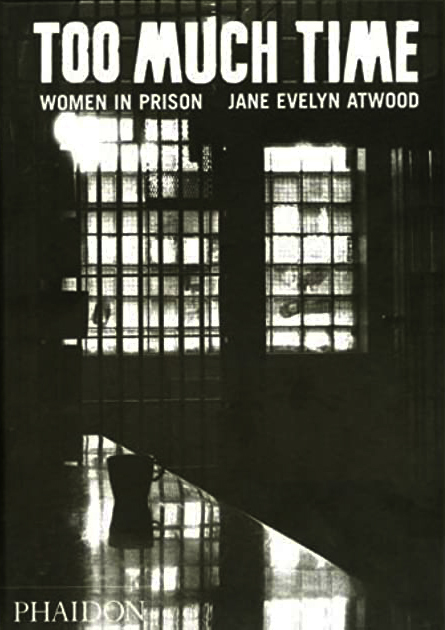
Jane Evelyn Atwood | TOO MUCH TIME: WOMEN IN PRISON, 2000
November 25, 2022Jane Evelyn Atwood, TROP DE PEINES: FEMMES EN PRISON, 2000, Éditions Albin Michel, Paris, France. (OUT OF PRINT)
Jane Evelyn Atwood, TOO MUCH TIME: WOMEN IN PRISON, 2000, Phaidon Press Ltd., London, England. (OUT OF PRINT)
“Curiosity was the initial spur. Surprise, shock and bewilderment soon took over. Rage propelled me along to the end.”
Too many times – and I’m sure I’m not alone in this – I have heard some well meaning dilettante assert that ‘art should be about beauty’ or ‘should only uplift us.’ In terms of that space where photography intersects with ideas of art and documentary – and not to mention history – something that comforts you is most likely wrong, if not simply pablum. When I’m sharing images on social media, there are some photographers I hesitate to post works from (as photography still carries the weight of being more ‘real’, thus can ‘offend’ as well as see yourself banned from those platforms): Gilles Peress is one of those, for his unflinching lens in places from Rwanda to the former Yugoslavia (“I don’t trust words. I trust pictures”), Gordon W. Gahan (specifically his images of the Vietnam War), Donna Ferrato (I was lucky enough to experience her groundbreaking series Living with the Enemy decades ago, in Windsor) or Martha Rosler (her House Beautiful: Bringing the War Home works that had their genesis in response to the Vietnam War (c.1967–72) but that she ‘revisited’ in 2004 and 2008, ‘updating’ them to Iraq and Afghanistan).
But the text I’ve selected for a Library Pick is something that is not ‘there’ but ‘here’, and in that respect is often – easily, repeatedly – ignored.
Jane Evelyn Atwood’s “monumental work on female incarceration, published in both French and English, took Atwood to forty prisons in nine different countries in Europe, Eastern Europe, and the United States. The access she managed to obtain inside some of the world’s worst penitentiaries and jails, including death row, make this ten-year undertaking the definitive photographic work on women in prison to date. Extensive texts include interviews with inmates and prison staff as well as Atwood’s own reminiscences and observations. The prize-winning photos in this book, including the story of an incarcerated woman giving birth while handcuffed, established Jane Evelyn Atwood as one of today’s leading documentary photographers.” (from her site)
Atwood has always used her camera as a means to tell stories too often not even dismissed but denied, and she has granted a level of dignity and consideration to those whom are too often not considered human but detritus.
A good friend is a theologian, but of the liberation theology vein: I enjoy talking with them, as their righteous anger is only matched by their ability to quote that repeatedly translated and edited text with a sense of the public good. I mention them as they once pointed out that in the New Testament, only one person was promised a place in the ‘kingdom of heaven’, and that was one of the criminals being crucified at the same time as Jesus.
In a more modern sense, I might cite Lutheran Minister (and ‘public theologian’) Nadia Bolz-Weber‘s contemporary addendum to the beatitudes, which include ‘Blessed are those who have nothing to offer. Blessed are they for whom nothing seems to be working.’
Atwood published ten books of her work and been awarded the W. Eugene Smith Grant in Humanistic Photography, the Grand Prix Paris Match for Photojournalism, the Oskar Barnack Award, the Alfred Eisenstadt Award and the Hasselblad Foundation Grant twice.
More of Atwood’s work can be seen here.
Like several of the books I’ve recommended, this is one I came across in my local library.
~ Bart Gazzola
Read More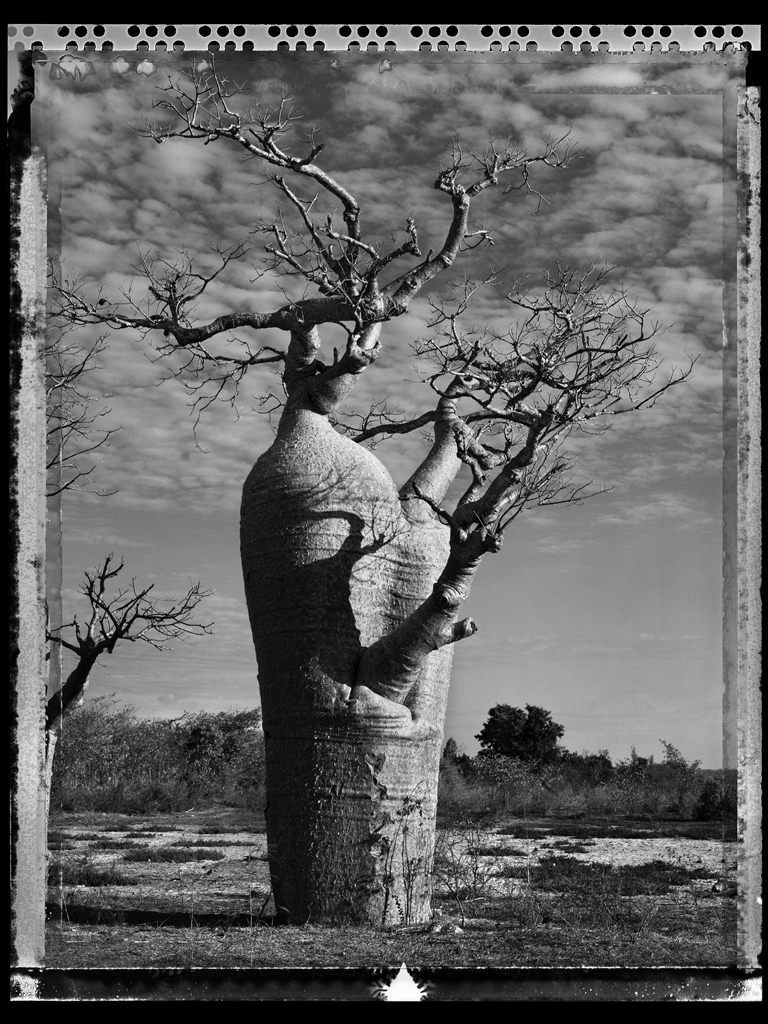
Elaine Ling | Baobab #31 – 2010, Madagascar
November 19, 2022Elaine Ling | Baobab #31 – 2010, Madagascar
Ce qui embellit le désert, dit le petit prince, c’est qu’il cache un puits quelque part…[What makes the desert beautiful, said the little prince, is that somewhere it hides a well…]
It is an odd feeling to encounter the work of an artist, seeing how prolific they are and be enamoured of their practice, then discover that they passed a few years ago. I’ve often had the same experience with authors (I have a habit of finding the work of a writer that is new to me, and consuming all the books, and it’s an empty sadness when you realize they won’t be creating any more).
This image is one from a series titled Baobob, by the late Elaine Ling (1946-2016). At her site it is the final series presented, from an extensive and enthralling body of work.
It can be read as having the quality of an epitaph: these massive, seemingly eternal natural ‘monuments’ that have survived her, and will likely survive all of us.
In that manner I have of being ‘too subjective’, Baobob trees remind me of Antoine de Saint Exupéry’s novel Le Petit Prince (1943): to me, it’s a melancholy story, about loss and death, with touching moments of truth that have contributed to how it – despite often being considered a story for children – speaks to many adults, like myself.
“Seeking the solitude of deserts and abandoned architectures of ancient cultures, Elaine Ling…explored the shifting equilibrium between nature and the man-made across four continents. Photographing in the deserts of Mongolia, Ethiopia, Madagascar, Timbuktu, Namibia, North Africa, India, South America, Australia, American Southwest; the citadels of Ethiopia, San Agustin, Persepolis, Petra, Cappadocia, Machu Picchu, Angkor Wat, Great Zimbabwe, Abu Simbel; and the Buddhist centres of Myanmar, Laos, Vietnam, Tibet, and Bhutan; she has captured that dialogue.” (from her site)
Voici mon secret. Il est très simple: on ne voit bien qu’avec le cœur. L’essentiel est invisible pour les yeux [Here is my secret. It is very simple: It is only with the heart that one can see rightly; what is essential is invisible to the eye].
On the first of August, 2016, Elain Ling lost her battle with lung cancer: her brother – Edward Pong – has indicated that he intends to continue to foster her legacy, through the maintenance of Ling’s site.
It is an impressive space with much more about Ling’s life and work – and many more of her moments from her life and around the world – that can be enjoyed here. C’est véritablement utile puisque c’est joli [It is truly useful since it is beautiful].
All quotes in italics are from Saint Exupéry’s The Little Prince .
Elaine Ling was also a recently featured Artist You Need To Know, in AIH Studios’ continuing series. You can enjoy that here.
~ Bart Gazzola
Read More
Recent Comments